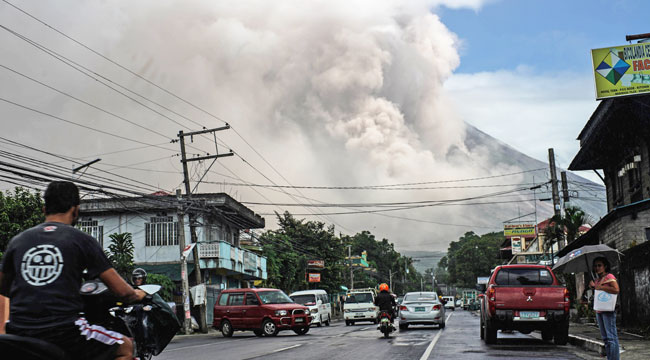
About a week ago, the Philippines’ most active volcano, Mount Mayon, began spewing lava as authorities issued warnings of an impending explosion. On Monday, that explosion happened, resulting in a mushroom-shaped cloud of ash hovering near Lagazpi City, south of Manila. Tens of thousands of people had previously evacuated the area surrounding the volcano, and authorities have now issued even more dire warnings.
CNN reports that 27,000 people have been ordered to leave their homes amid warnings that a hazardous eruption could be “imminent.” The evacuation areas cover a five-mile radius around the summit, where a new lava dome has formed, leading to fears that the dome could collapse, which could cause further explosions or even rockfalls and landslides:
“The evacuation has been ongoing since [the volcano] started showing signs of instability,” Mark Dambal, information officer at the Philippines’ Office of Civil Defense, told CNN.
“Because of the volcanic activity, the danger zone was extended from six kilometers to eight kilometers [from the volcanic summit],” he added. “People staying in the area are now ordered to be evacuated.”
The Weather Channel reveals that — in a worst-case scenario — a hazardous explosion could send superheated rocks and a lava flow tumbling down the mountain at 50+ mph. To that end, the Lagazpi airport has been closed and all schools cancelled in the Albay province while residents who haven’t been evacuated are being told to stay inside and wear face masks.
The Guardian details the last fatal eruption by Mount Mayon, which occurred in 2013 and killed five climbers and injured several others while “spewing room-sized rocks” upon a group of thirty campers. Over the past 400 years, the volcano has erupted at least 40 times, with the most fatal eruption occurring in 1814 and killing over 1,200 people and flattening multiple towns. With Philippine officials raising the eruption threat to its highest level, their fears of a repeat are not unfounded.
(Via CNN, Weather Channel, The Guardian & OSU)
